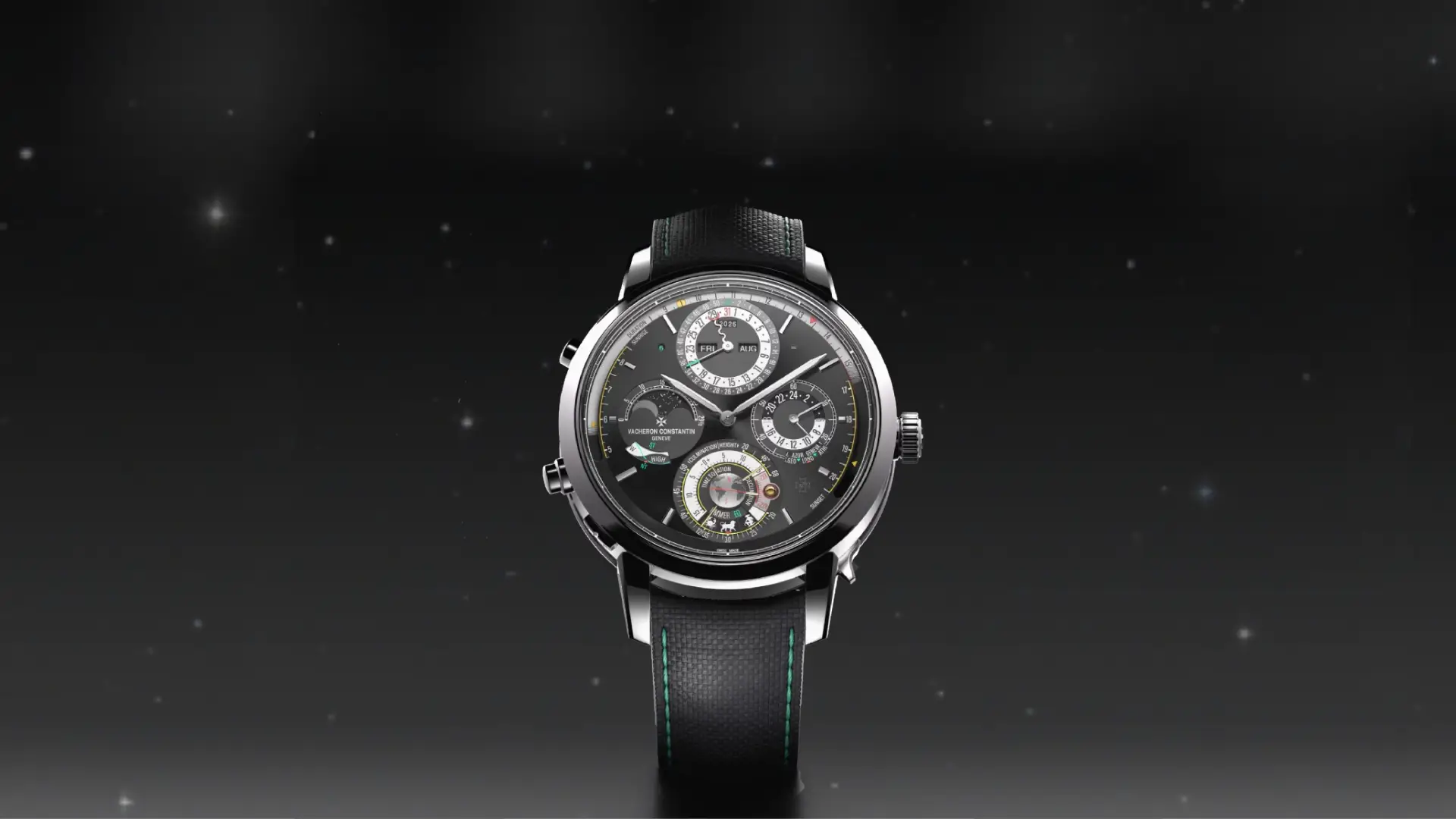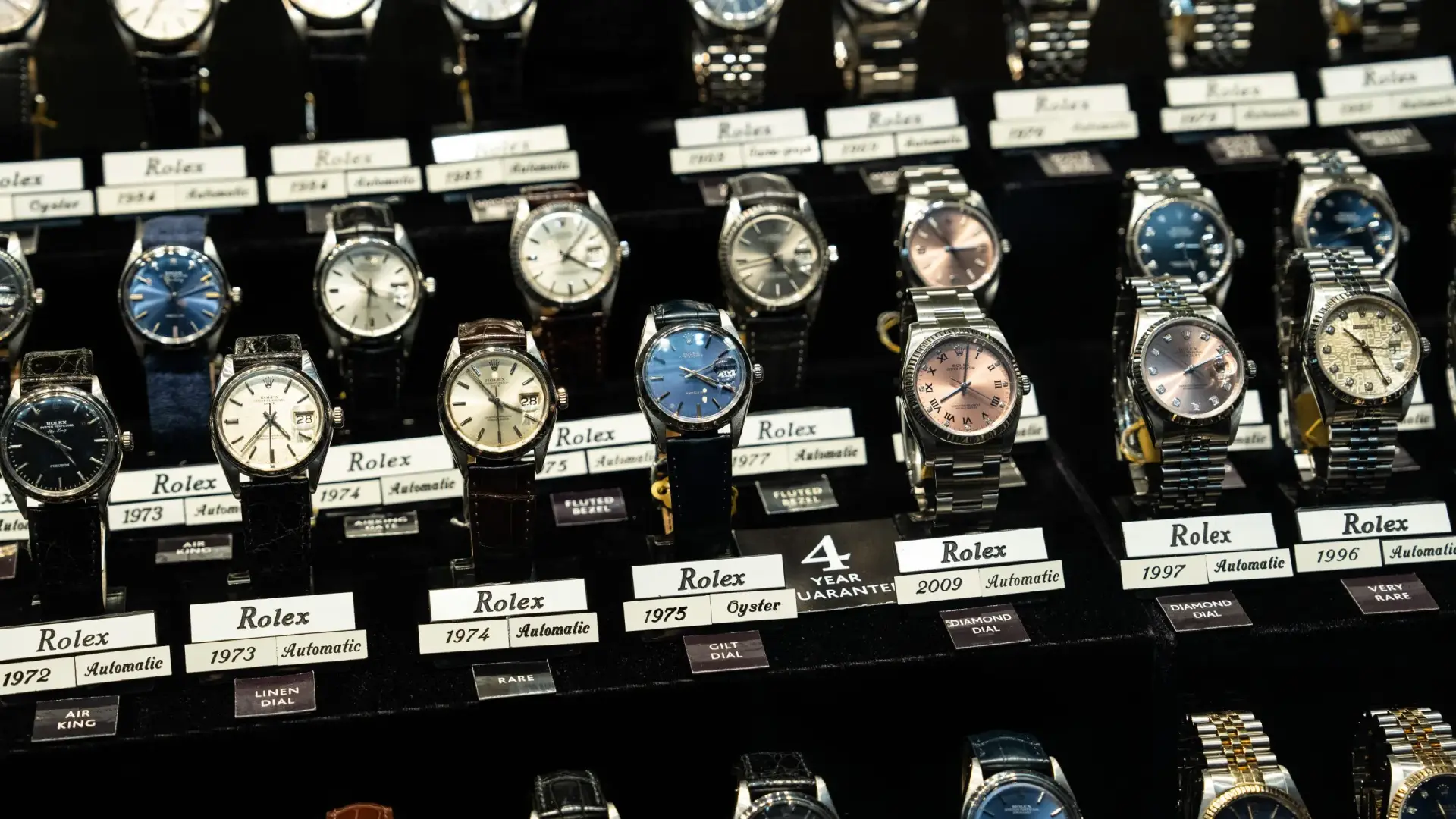Vacheron Constantin Les Cabinotiers Solaria – A Masterpiece of Astronomical Watchmaking
Watch Guides
2025-11-25Introduction
For thousands of years, people have looked to the sky to understand time. Before mechanical watches existed, timekeeping was closely tied to astronomy. Early civilizations used the stars to mark seasons. Sailors relied on constellations to find their way across the oceans. During the Renaissance, scholars even built large astronomical clocks to show how the heavens moved.These discoveries formed the foundation of modern watchmaking.
By the 16th century, astronomical clocks had become major technical achievements. They were not just timekeepers—they also reflected the scientific progress and confidence of the era. Many of these large clocks stood in public squares and royal palaces, impressing people with their moving planets, star maps, and detailed displays of the heavens.
By the 18th century, this knowledge had moved from grand public clocks into personal timepieces. Pocket watches began to include advanced astronomical features. They could show moon phases, sidereal time, and even the equation of time. For the first time, people could carry these celestial indicators in a compact, portable form—right in the palm of their hand.
This long evolution laid the foundation for what we now know as astronomical watchmaking. Today, it stands as one of the most complex and expressive fields in high-end horology.
Within this grand historical arc, Vacheron Constantin has served as one of the discipline’s most important guardians. Since 1755, the maison has produced custom astronomical pocket watches for monarchs and scholars alike. The Les Cabinotiers Solaria is therefore not an isolated achievement, but a natural culmination of nearly three centuries of expertise.
Vacheron Constantin: A Centuries-Old Guardian of Astronomical Watchmaking
19th Century: Laying the Astronomical Cornerstone
In the 1840s, Vacheron Constantin created a Dual-Time Astronomical Pocket Watch for Louis Philippe I, Duke of Orléans. He was a key member of the French royal family and a passionate supporter of science and watchmaking. This made him the perfect patron for such an innovative timepiece.
The watch showed moon phases and sidereal time, two key features of astronomical watchmaking. Its hand-enameled dial displayed simplified celestial charts. The movement was carefully calibrated to the Paris meridian, matching the Duke’s observation habits. Made from 18K red gold for long-term stability, the pocket watch was more than a simple timekeeper—it acted as a portable miniature observatory.
This creation marked Vacheron Constantin’s formal entry into astronomical complications and set a precedent for combining technical precision with refined craftsmanship.
20th Century: Bridging Pocket Watches to Wristwatches
The 1970s brought a new challenge for watchmakers: transferring complex astronomical functions from large, stationary pocket watches to much smaller wristwatches.
Back then, the Overseas watches offered simple features, such as a moon phase and date. Even though they were modest, these functions were a key step in bringing astronomical complications to the wrist.To fit astronomical functions into a wristwatch, watchmakers needed precision engineering and smart gear designs. They also had to carefully balance the watch’s size, durability, and ease of reading.
These watches were the first to bring astronomical functions to the wrist. While simple by today’s standards, the 1970s Overseas models laid the groundwork for later masterpieces, including the Les Cabinotiers Solaria, where multiple celestial functions coexist in a single wristwatch.
21st Century: Forging the Path for Solaria
In 2006, Vacheron Constantin launched Les Cabinotiers, a special atelier for crafting one-of-a-kind luxury watches. The division aimed to preserve the brand’s astronomical traditions and push the limits of fitting intricate complications into wristwatches.
During the next two decades, watchmakers perfected the techniques and gear systems needed to manage very complex astronomical functions. This work laid the foundation for the Solaria, a modern wristwatch that combines multiple celestial displays with precision craftsmanship.
Les Cabinotiers: The Epitome of Bespoke Astronomical Watchmaking
Historical Roots of the “Cabinotiers”
The term cabinotier comes from 18th-century Geneva. These master watchmakers worked in bright attic workshops, called “cabins,” creating highly specialized watches for European royals, astronomers, and scholars. They were admired not only for their mechanical skill but also for their deep astronomical knowledge, combining the roles of artisan and scientist.
Vacheron Constantin’s founder, Jean-Marc Vacheron, was part of this tradition. The modern Les Cabinotiers atelier, established in 2006, revived this legacy of custom astronomical watchmaking. Some of the division’s early creations even recreated 18th-century astronomical pocket watches from the brand’s archives.
An Unconstrained Creative Philosophy
Unlike regular watch collections, Les Cabinotiers is free from production schedules, commercial pressures, or preset designs. Here, watchmakers are given complete creative freedom, allowing them to explore unlimited complexity and true artistic expression.
Over the years, this bold philosophy has produced legendary timepieces. The Berkeley Grand Complication, with its 63 functions, showcased technical mastery on an unprecedented scale. Even more astonishing was Reference 57260, the most complicated watch ever made, boasting 57 distinct functions and redefining what a timepiece could achieve.
Within this tradition of daring innovation, the Les Cabinotiers Solaria emerges as the next remarkable chapter. It carries forward centuries of astronomical expertise while introducing groundbreaking inventions, including:
- Patented sidereal time display with unprecedented precision for a wristwatch
- Advanced sunrise and sunset calculations adjustable for any geographic location
- Lunar orbit synchronization accurate for a century
- Multi-layered movement architecture that fits 41 complications in a 15mm case
- Torque reduction mechanisms ensuring stability and reliability across all functions
The Solaria is not just a watch—it is a mechanical universe on the wrist, combining tradition, innovation, and artistry in one extraordinary timepiece.
Les Cabinotiers Solaria: An Astronomical Masterpiece on the Wrist
Core Technical Overview
- Diameter: 45 mm
- Thickness: 15 mm
- Total Complications: 41
- Astronomical Functions: 14
- Patents: 13 total, including 7 dedicated to astronomical calculations
This is not merely a complicated watch—it is a mechanical model of the universe, condensed into a wearable sculpture.
Astronomical Complications: Value, Heritage, and Breakthroughs
1. Sunrise & Sunset Time Calculation
In the 18th century, John Harrison’s marine chronometers allowed sailors to calculate longitude with remarkable accuracy.
However, sunrise and sunset times could only be calculated for a fixed latitude, limiting their usefulness for different locations.
The Les Cabinotiers Solaria overcame this limitation by allowing customized calculations for any geographic coordinate, achieving nearly ten times the precision of historical mechanisms.
Remarkably, all of this was integrated into a compact 45 mm wristwatch without compromising readability.
2. Sidereal Time Display
In 1925, Vacheron Constantin made an astronomical pocket watch for the Vatican that showed sidereal time. For its time, it was remarkable—but it had limitations: the watch was very large at 60 mm and could be off by about 2 seconds per day.
Today, the Les Cabinotiers Solaria performs the same sidereal time function with a new patented gear system, reducing the daily error to just 0.5 seconds. And it does all this in a compact wristwatch, making it far more precise and wearable than its historical predecessor.
3. Lunar Orbit Cycle Display
Traditional moon phase watches were limited in accuracy, often drifting by about 1 day every 33 months. The high-precision versions developed in the 1990s improved this dramatically, reducing the deviation to 1 day every 122 years—an impressive leap, though still not flawless.
By comparison, the Les Cabinotiers Solaria delivers lunar age and orbit synchronization with near-perfect precision, staying virtually error-free for an entire century. Thanks to its high-resolution gear system, the watch tracks the moon’s orbit continuously, elevating what was once a modest approximation into a long-term, highly accurate astronomical display.
4. Additional Astronomical Functions
- Equation of Time
- Celestial Chart
- Day/Night Length Indicator
- Zodiacal calendar and solar declination indicators
Together, these establish the Solaria as a comprehensive instrument of astronomical knowledge.
Mechanical Innovations & Craftsmanship
The Les Cabinotiers Solaria is built with a clever multi-layer structure that fits 41 complications into a case only 15 mm thick. To keep all these functions running smoothly, Vacheron Constantin uses patented torque-reduction systems that stabilize power delivery.
The watch comes in an 18K rose-gold case inspired by the “red gold” used in 19th-century astronomical pocket watches, giving it both historical character and modern refinement. Every component meets Geneva Seal standards, including hand-finished anglage, black polishing, and Côtes de Genève decoration.
Its dials combine traditional Geneva guilloché with laser-engraved star charts. This mix of classic handcraft and modern technology creates a design that feels timeless yet contemporary.
Conclusion
The Vacheron Constantin Les Cabinotiers Solaria is a groundbreaking watch in horology. With 41 functions, including 14 astronomical displays, it brings centuries of science and art into a 45 mm wristwatch.
More than just a timepiece, the Solaria showcases humanity’s fascination with the universe. It turns the movements of the stars and planets into a mechanical display right on your wrist.
As a technical marvel and a symbolic masterpiece, the Solaria does more than simply keep time—it brings the universe’s eternal rhythm to life.



